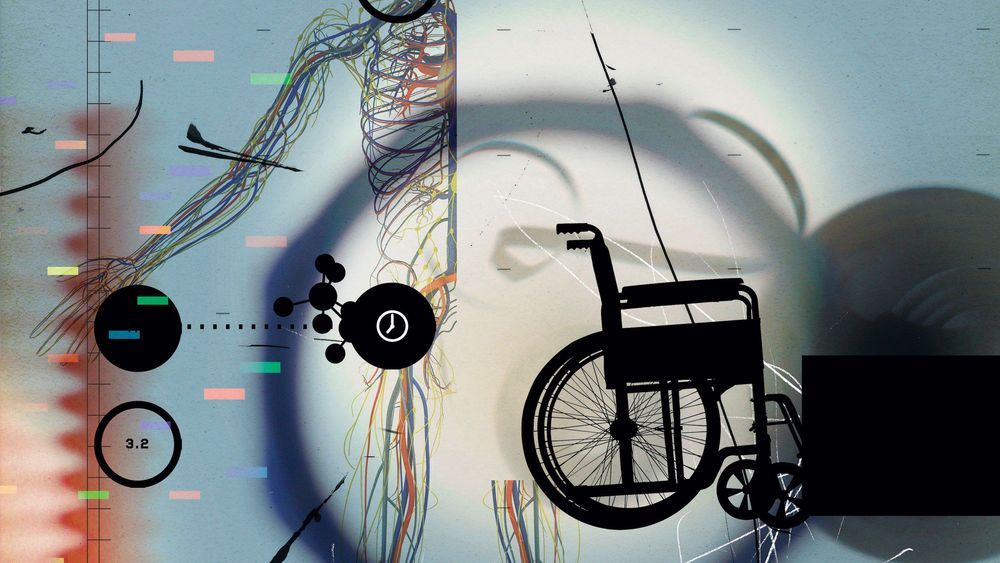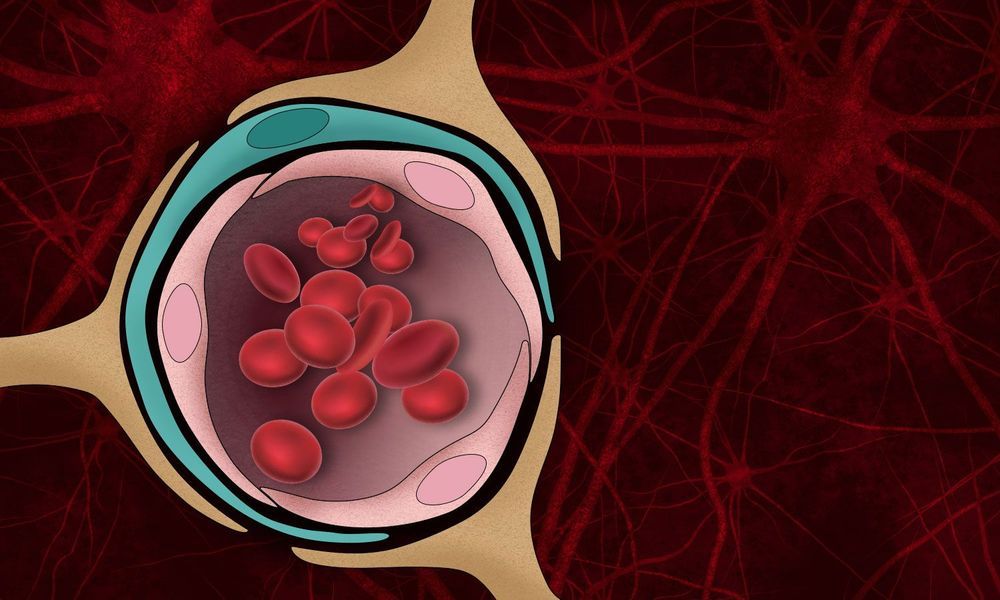Get the latest international news and world events from around the world.
Ray Kurzweil: Enhanced Longevity by 2030
People say, well, but we’re going to stop being human if we merge with machines. No, that is what it means to be human.
Dr. Kurtzweil, I would like to ask you. You have made hundreds of predictions out of which many already have come true, and with no doubt many more will come through. But if you would have to single out your three most important predictions for the upcoming decade, what would they be?
Well, one is health and medicine. We talked about our bodies and our bodies are basically actually information because it’s governed by our genes. They are information processes. We didn’t used to treat it that way. It was basically hit or miss. We’d find something. Oh, here’s something that lowers blood pressure. Here’s something that kills HIV. And we would find these things accidentally, so progress was linear. Still valuable. I gave a speech to 12 and 13 year old science winners recently and I said you all would be senior citizens if it hadn’t been for this progress because life expectancy was 19 a thousand years ago. But this is going to go into high gear now. The enabling factor for health and medicine to become an information technology was the genome project. That itself is a perfect exponential and we now have the software of life and we’re also making exponential progress in being able to model it, simulate it, understand it and reprogram it.
And I could speak at great length about examples of how we’re doing that. You can for example now fix a broken heart. Not yet from romance, that’ll take a few more developments in virtual reality, but from a heart attack. My father had a heart attack in the 60s, nothing you could do about it, he could hardly walk. But I’ve talked to people now who could hardly walk and are now rejuvenated. You actually have to be a medical tourist and go to a place like Israel. But that’s just one example of many and what is now a sort of a trickle of these developments, is going to be a flood ten years from now. These technologies will be a thousand times more powerful than they are today because they’re doubling in power every year. They’ll be a million times more powerful in 20 years.

New clues on stem cell transplant rejection revealed in study
In 2006, scientists discovered a way to “reprogram” mature cells—adult skin cells, for example—into stem cells that could, in principle, give rise to any tissue or organ in the body. Many assumed it was only a matter of time until this groundbreaking technique found its way into the clinic and ushered in a regenerative medicine revolution.
Because the same patient would be both the donor and the recipient of cells derived from these so-called induced pluripotent stem cells (iPSCs), these cells would be seen as “self” by the immune system, the thinking went, and not subject to the problems of rejection that plague conventional transplants.
But iPSCs haven’t emerged as the cure-all that was originally envisioned, due to unforeseen setbacks, including the surprising preclinical finding that iPSC-derived cell transplants are often rejected, even after being reintroduced into the organism the cells were sourced from.
Are We in a SIMULATION? — Elon Musk & Neil deGrasse Tyson Answer
✎ Are we living in a simulated reality? Check out what Elon Musk & Neil deGrasse Tyson have to say about it.
★★★ BUILD UNSTOPPABLE CONFIDENCE ★★★
Get a FREE video every morning to help you build your confidence for the next 254 days. Find out here: http://evancarmichael.com/believe/action-plan.php
★★★ SECRET BONUS VIDEO ★★★
What is the One Word that is most important to Tony Robbins, Gary Vaynerchuk, will.i.am, Oprah Winfrey, and Howard Schultz? Find out here: http://www.evancarmichael.com/onewordbonusvideo/
★ RECOMMENDED VIDEOS FOR YOU ★
If you liked this video, you’ll love these ones:
• Elon Musk’s Top 10 Rules For Success — https://youtu.be/zX7I_Rw8Q0I
• “Meaning in LIFE is Something That You CREATE!” — Neil deGrasse Tyson — https://youtu.be/ltJbyS_DWIo
• Elon Musk’s (@elonmusk) Top 10 Big Ideas — https://youtu.be/NO_4vL5jxOA
❤ HELP TRANSLATE THIS VIDEO ❤
If you loved this video, help people in other countries enjoy it too by making captions for it. Spread the love and impact.
✔ SOURCES ✔

Researchers enhance neuron recovery in rats after blood flow stalls
Researchers at the Stanford University School of Medicine report in a new study that they found a way to help rats recover neurons in the brain’s center of learning and memory. They accomplished the feat by blocking a molecule that controls how efficiently genetic instructions are used to build proteins.
If the approach described in the study can be applied to humans, it may one day help patients who’ve suffered a stroke, cardiac arrest or major blood loss and are thus at higher risk of memory loss.
In the study, to be published online Aug. 19 in eNeuro, researchers induced extremely low blood pressure—as would happen when the heart stops beating—in rats. These rats lost neurons in a specific region of the hippocampus critical to learning and memory, but the researchers improved the animals’ recovery of the cells by injecting a molecule that blocks a microRNA: a short molecule that tweaks gene activation by preventing the conversion of genetic blueprints into proteins. Interestingly, the scientists found that a microRNA blockade potentially causes astrocytes—cells that support neurons and make up 50% of the cells in the brain—to turn into neurons.

What if aging weren’t inevitable, but a curable disease?
Each Cyclops had a single eye because, legend has it, the mythical giants traded the other one with the god Hades in return for the ability to see into the future. But Hades tricked them: the only vision the Cyclopes were shown was the day they would die. They carried this knowledge through their lives as a burden—the unending torture of being forewarned and yet having no ability to do anything about it.
Since ancient times, aging has been viewed as simply inevitable, unstoppable, nature’s way. “Natural causes” have long been blamed for deaths among the old, even if they died of a recognized pathological condition. The medical writer Galen argued back in the second century AD that aging is a natural process.
His view, the acceptance that one can die simply of old age, has dominated ever since. We think of aging as the accumulation of all the other conditions that get more common as we get older—cancer, dementia, physical frailty. All that tells us, though, is that we’re going to sicken and die; it doesn’t give us a way to change it. We don’t have much more control over our destiny than a Cyclops.
It’s time to take the Animus out of Assassin’s Creed
The question of whether the Animus still belongs in the Assassin’s Creed series comes up with the release of each new game, but Assassin’s Creed Odyssey makes me even more sure that Ubisoft should take a simple, but obvious, step: Remove the Animus from future games completely and pretend it never existed.
People play Assassin’s Creed games to travel through time and kill a bunch of people; the framing device that explains how and why characters in our own time are themselves taking that journey has never felt so archaic and vestigial.
I don’t want to relitigate the past of the series or guess about the future, but the lore of the franchise itself is a mess, as you’d expect from any pop culture property that stretches across 20 games and 11 years. The easiest way to clean it all up would be to simply cut the line that holds all the games together, and that line is the Animus.

NVIDIA AI Platform Takes Conversational User Experience To A New Level
After breaking all the records related to training computer vision models, NVIDIA now claims that it’s AI platform is able to train a natural language neural network model based on one of the largest datasets in a record time. It also claims that the inference time is just 2 milliseconds which translates to an extremely fast response from the model participating in a conversation with a user.
After computer vision, natural language processing is one of the top applications of AI. From Siri to Alexa to Cortana to Google Assistant, all conversational user experiences are powered by AI.
The advancements in AI research is putting the power of language understanding and conversational interface into the hands of developers. Data scientists and developers can now build custom AI models that work exactly like Alexa and Siri but for a specialized and highly customized industry use case from the healthcare or legal vertical. This enables doctors and lawyers to interact with expert agents that can understand the terminology and the context of the conversation. This new user experience is going to be a part of future line of business applications.


“Gerevivify The Algorithm/elixir of Life”
Aren Jay shared this cogent article to my Timeline… It is not new even Hippocrates was able to determine that the gut causes and or assists in all diseases. But the 19th and 20th centuries researchers began saying that microbes are good for mankind which sent science reeling through generations until this day… Respect r.p.berry & AEWR wherein we have developed a formula and Algorithm that deals with this very serious problem completely. A very expensive cure but one that will take Woman-Man past the Escape Velocity so many have written about…